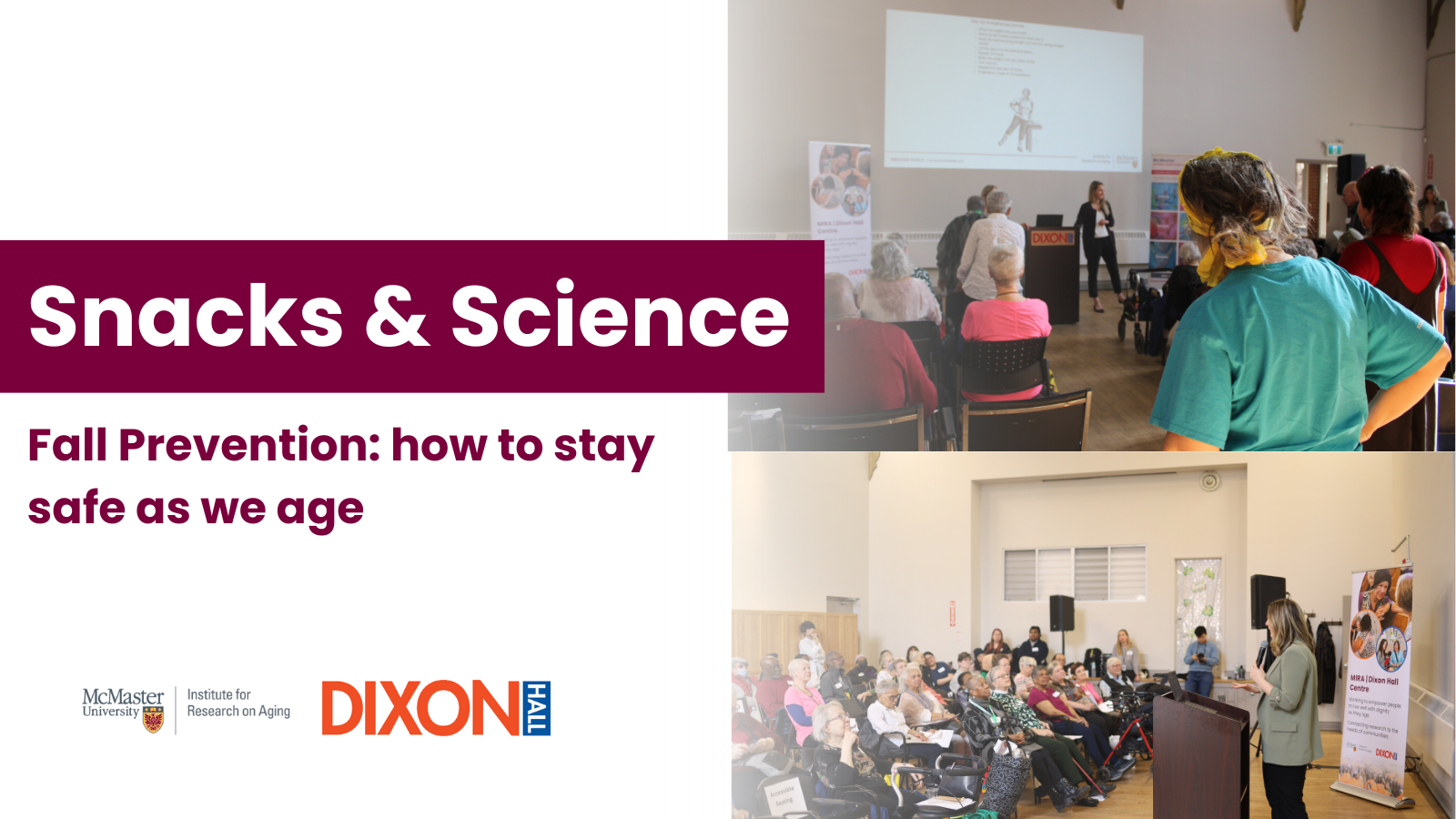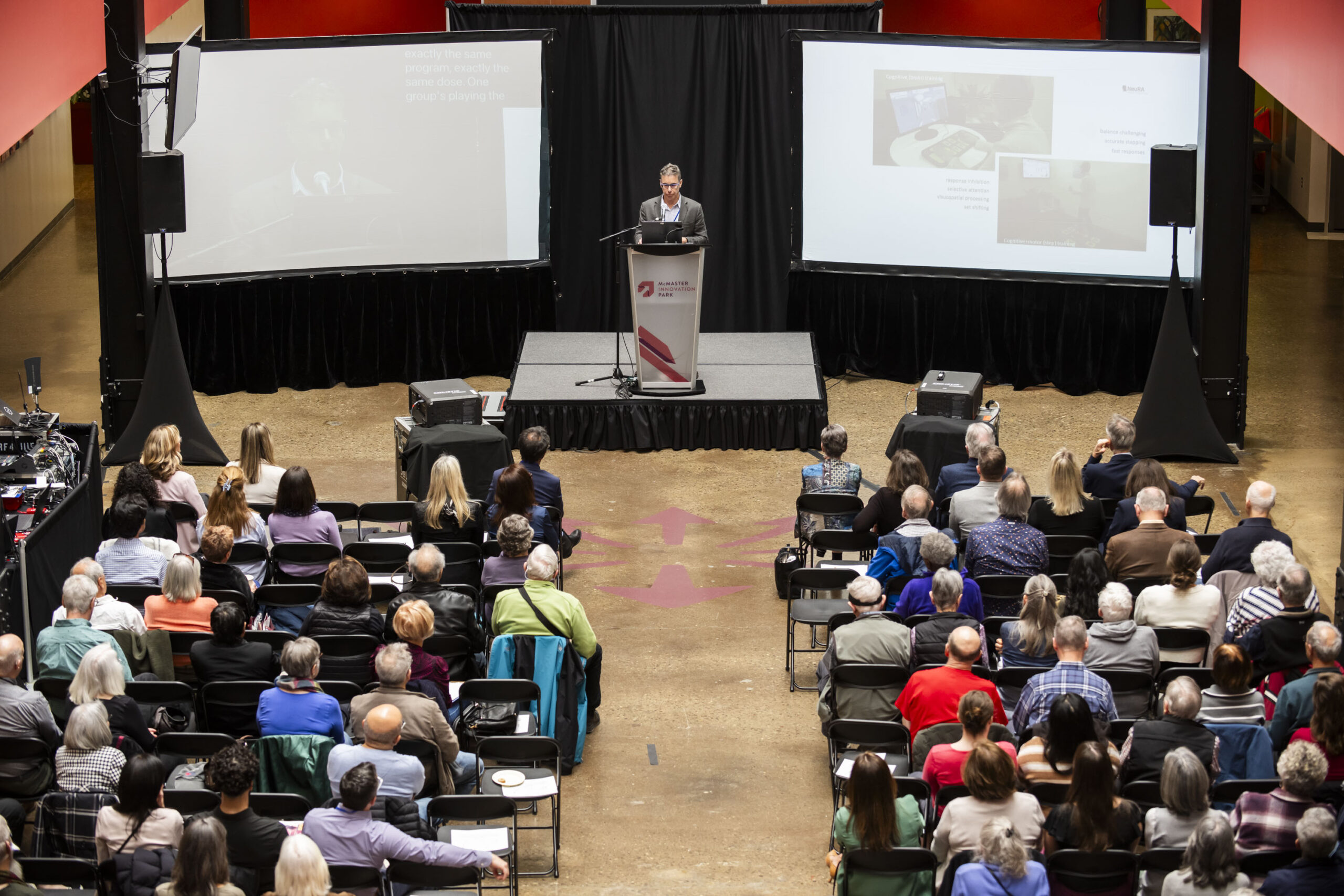Members of MIRA ​were featured in a Globe and Mail supplement focused on healthy aging. Distributed in print and online on November 21, 2016, the supplement features stories about outcomes arising from McMaster’s strength in aging research.
Published: November 18, 2016

Therapies, supplements and medicines intended to counter the aging process are increasingly popular. To Mark Tarnopolsky, a genetic/metabolic neurological clinician-scientist at McMaster University in Hamilton, a better way to remedy the deterioration that comes with advancing years is to stay physically active.
Dr. Tarnopolsky, a professor of pediatrics and medicine whose research looks at genetic and metabolic muscular diseases and who studies the biological underpinnings of human aging, says the health benefits of physical fitness include retarding – and even reversing – the process of aging.
“The body is amazing,” says Dr. Tarnopolsky, director of the Neuromuscular and Neurometabolic Clinic at the McMaster University Medical Centre.
A study using mice that he carried out with his team of researchers showed that regular exercise on a miniature treadmill almost completely eliminated the effect of a genetic disease that caused premature aging. Dr. Tarnopolsky says that lifespans of the top 25 per cent of physically fit adults increase an average of four years with vigorous exercise.
The major reason for this is the positive changes that occur throughout the body during and right after a workout. It causes temporary stress to the body, which is then countered by our natural defence systems, resulting in lower levels of inflammation, increased oxygen-carrying capacity and tissue extraction, as well as enhanced synthesis of protein, he says. “We can rebuild and renew muscle and other tissues.”
Being in better shape also helps seniors cope with the activities of daily living, from rising out of chairs to carrying things and reaching into cupboards, he notes, enhancing their quality, enjoyment and even duration of life.
Stuart Phillips, a professor in McMaster University’s Department of Kinesiology, believes the phrase “I’m too old for that” is uttered too often in the world of physical fitness.
While many Canadians still believe exercise for seniors can cause more harm than good, researchers have found the exact opposite: that a constant exercise regime is vastly beneficial not only for regaining muscle mass, but also regenerating damaged muscle in the elderly.
Researchers in McMaster University’s kinesiology department learned this conclusively by conducting tests on sedentary older men who were assigned to perform various exercises. Muscle biopsies taken before and after the exercise, along with isotope tracers and saliva samples, determined that exercise is “remarkably potent in stimulating the formation of new muscle proteins and turning on a population of muscle stem cells called satellite cells,” according to Dr. Phillips. “Even into older age, the muscle still retains a plasticity and can respond to the stimulation of vigorous exercise.”
Unfortunately, adds Dr. Phillips, “Canadians, especially older Canadians, are not hitting their physical activity targets – even for moderate to vigorous activity such as aerobics, to say nothing of the more intense workouts you see in gyms.”
Fortunately, Dr. Phillips says the path to fitness is easier than one might think. “Only 150 minutes per week is required: the equivalent perhaps of two long walks combined with a few sessions at the gym – anything to get people away from their televisions and laptops.”
Better still, Dr. Phillips doesn’t recommend any specific type of exercise. “Find something you like so that you can stick with it,” he says. “It could be anything from running to resistance training: do it right and work up a sweat, but not to the point you’re in pain.”
If Dr. Phillips has one message for all seniors, it’s that “the payoff is large, and it’s never too late to start, even if you’ve spent all your life inactive. The old cliché is true: your body will thank you for it.”
Dr. Tarnopolsky likens the compression of aging theory to a line from a Neil Young song, “It’s better to burn out than it is to rust,” and personally embraces the fact that we should keep up exercise long into our golden years. While more sedentary seniors will suffer a steady decline in the last decade of life (rust), those with a highly active lifestyle, with strenuous exercise, will remain relatively healthy and are then apt to die suddenly (burn out) right at the end.
“People say, ‘That’s the way I want to go out, in a flame of glory,’” he comments, noting that seniors who lose their functional capacities can become reclusive, especially if they are unable to do things like go grocery shopping or play with their grandchildren. “There are so many benefits to maintaining strength and fitness.”
This article originally appeared in a Globe and Mail sponsor content feature on Healthy Aging produced by Randall Anthony Communications Inc. Reprinted with permission. All rights reserved. The feature can be viewed here or downloaded here.

